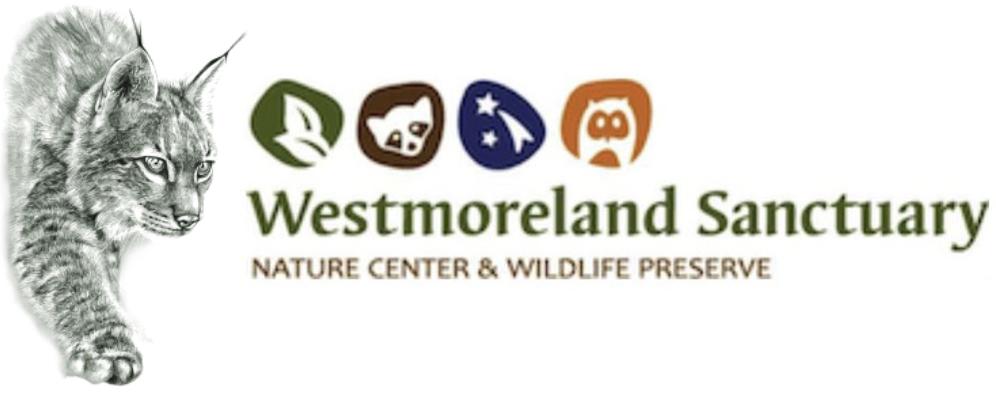“Nature is not a place to visit, it is home.”
-Gary Synder
Invasive species are species that have been introduced that have harmful effects on the environment.
Many gardens feature non-native plants. These plants do not have the same ecological benefits as native plants. These introduced species do not provide the necessary nutritional content, cannot act as a host for native insects, and will crowd out native plants.
Many invasive plants are allelopathic, which means that they release chemicals into soil which inhibit the growth of native plants. Many of our favorite foods are in fact native to the Northeast. If you love the following foods, it is important to have healthy soil, free of invasive plants.”
If you would like a recommendation from our professional staff, we will survey your property. Call us at (914) 666-8448 or email us @info@westmorelandsanctuary.org.
Here are some tips to becoming a steward of your own land and working towards a sustainable future:
- Golden Star, also known as Green-and-Gold, (Chrysogonum virginianum)
- Growing requirements: any soil & partial to full sun
- Bloom Time: April to October
- Who Benefits: pollinators use these flowers as a food source
- Snow Flurry Aster, also known as White Heath Aster, (Symphyotrichum ericoides)
- Growing Requirements: dry to medium soil & full sun
- Bloom Time: September to October
- Who Benefits: pollinators use these flowers as a food source
- Violets (Viola sp.)
- Growing requirements: any soil & partial to full shade
- Bloom Time: April to May
- There are hundreds of species of violets and most, but not all are native to North America, so make sure you get a plant that is native
- Who benefits: fritillary butterflies and 30 other local pollinators use violets as host plants for their young
- Deer resistant


- Beebalm (Monarda sp.)
- Growing requirements: wet soil & partial to full sun
- Bloom Time: June to September
- Who Benefits: true to its name, beebalm is a favorite of bees, but can also be visited by butterflies and hummingbirds
- Goldenrod (Solidago sp.)
- Growing requirements: full sun
- Bloom Time: August to October
- Who Benefits: 138 local pollinators use goldenrod as a host plant
- Northern Blue Flag Iris (Iris versicolor)
- Growing requirements: wet soil & partial to full sun
- Bloom Time: May to July
- Who Benefits: pollinators use these flowers as a food source
- Virginia Bluebells (Mertensia virginica)
- Growing requirements: average to moist soil & partial to full shade
- Bloom Time: April to June
- Who Benefits: these early flowers are important for pollinators as they become active in early spring
- Wood Lily (Lilium philadelphicum)
- Growing requirements: dry soil & full shade to full sun
- Bloom Time: July to August
- Who Benefits: pollinators use these flowers as a food source

- Cinnamon Fern (Osmundastrum cinnamomeum)
- Growing requirements: wet soil & partial to full shade
- Fronds: tall, brown fronds appear in April and contrast strikingly with the green leaves. These bear a resemblance to cinnamon sticks and gave the cinnamon fern its name.
- Who Benefits: small, ground-dwelling can hide in ferns while looking for food
- Deer resistant
- Purple Love Grass (Eragrostis spectabilis)
- Growing requirements: dry soil (drought tolerant) & full sun
- Bloom Time: July to August
- Who Benefits: the seeds are very nutritious and eaten by songbirds and small mammals.
- Deer resistant
- Blue Ridge Blueberry Bush (Vaccinium pallidum)
- Growing requirements: dry soil (drought tolerant) & full sun
- Bloom Time: March to April
- Fruit Time: June to July
- Who Benefits: 295 local pollinators use this bush as a host plant
- Deer resistant
- Button Bush (Cephalanthus occidentalis)
- Growing requirements: wet to moist soil (grows in wetlands and riverbanks) & partial to full sun
- Bloom Time: June to August
- Who Benefits: pollinators use these flowers as a food source. After the flowers are fertilized, reddish-brown “nutlets” mature from August to November. These are eaten by native waterfowl
- Eastern Redbud Tree (Cercis canadensis)
- Growing requirements: dry to moist soil & full sun to full sun
- Bloom Time: April to May
- Who Benefits: these early flowers are important for pollinators as they become active in early spring
- Hardy Hibiscus (hibiscus moscheutos)
- Growing requirements: wet to moist soil & full sun
- Bloom Time: July to September
- Who Benefits: 25 local pollinators use this bush as a host plant. Its flowers provide food for hummingbirds, butterflies, moths, bees, and other pollinators
- American Wisteria (Wisteria frutescens)
- Growing requirements: moist soil & full to partial sun
- Bloom Time: April to August
- Who Benefits: this a host plant for pollinators including Long-tailed Skippers, Silver-spotted Skippers, Marine Blue, and Zarucco Duskywing Butterflies
- Deer resistant
- Trumpet Vine (Campsis radicans)
- Growing requirements: average soil & partial to full sun
- Bloom Time: July to September
- Who Benefits: Hummingbirds drink the nectar from trumpet vine’s flowers
- Deer resistant
For additional native plant recommendations, contact us at (914) 666-8448 or info@westmorelandsanctuary.org or visit Native Plant Finder.

